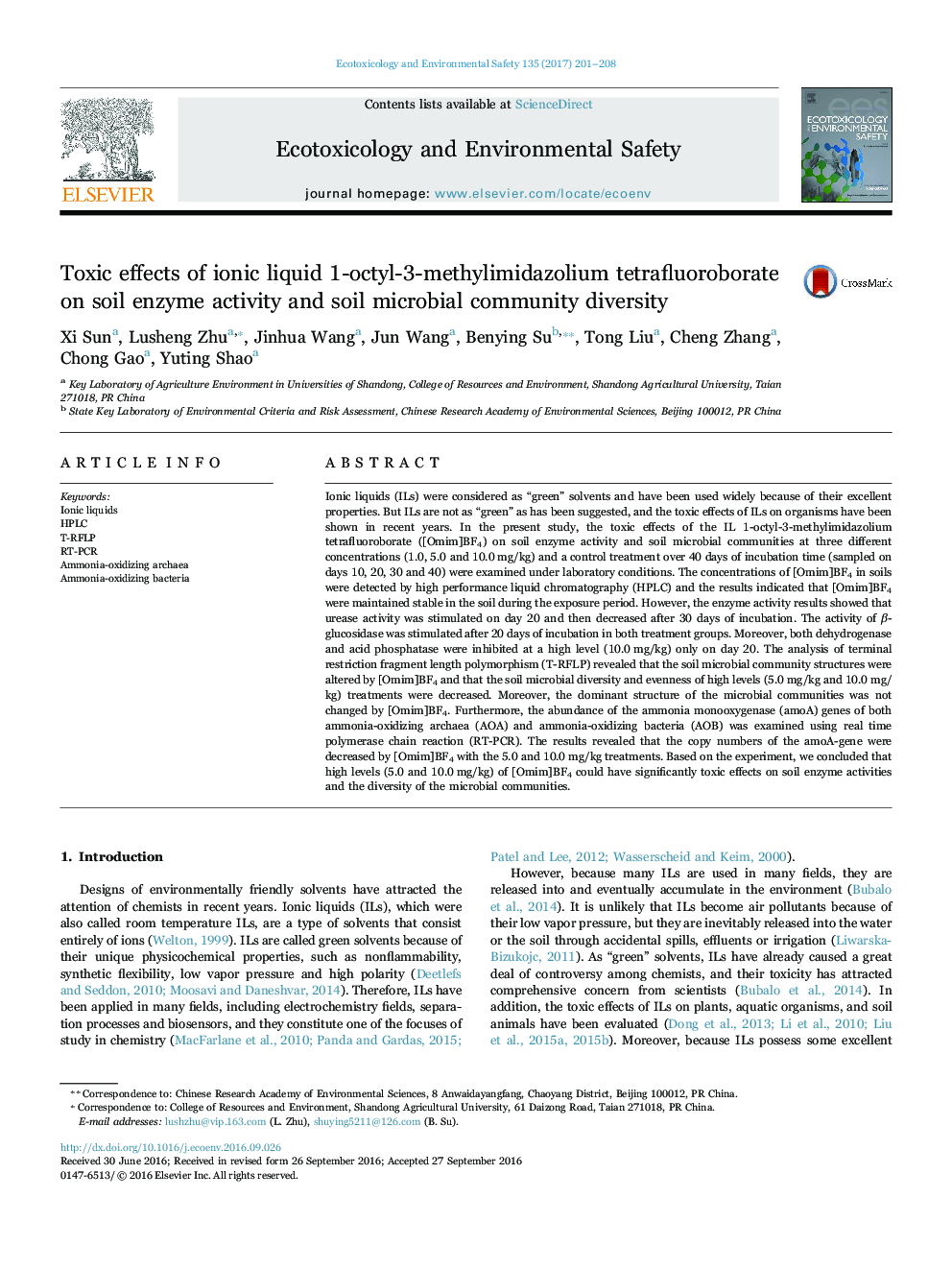| کد مقاله | کد نشریه | سال انتشار | مقاله انگلیسی | نسخه تمام متن |
|---|---|---|---|---|
| 4418978 | 1618929 | 2017 | 8 صفحه PDF | دانلود رایگان |
• Toxic effects of [Omim]BF4 on soil microbial community diversity were investigated.
• Soil microbial community structure was disturbed by [Omim]BF4 at 5 and 10 mg/kg.
• Abundance of functional genes were inhibited by [Omim]BF4 at 5 and 10 mg/kg.
Ionic liquids (ILs) were considered as “green” solvents and have been used widely because of their excellent properties. But ILs are not as “green” as has been suggested, and the toxic effects of ILs on organisms have been shown in recent years. In the present study, the toxic effects of the IL 1-octyl-3-methylimidazolium tetrafluoroborate ([Omim]BF4) on soil enzyme activity and soil microbial communities at three different concentrations (1.0, 5.0 and 10.0 mg/kg) and a control treatment over 40 days of incubation time (sampled on days 10, 20, 30 and 40) were examined under laboratory conditions. The concentrations of [Omim]BF4 in soils were detected by high performance liquid chromatography (HPLC) and the results indicated that [Omim]BF4 were maintained stable in the soil during the exposure period. However, the enzyme activity results showed that urease activity was stimulated on day 20 and then decreased after 30 days of incubation. The activity of β-glucosidase was stimulated after 20 days of incubation in both treatment groups. Moreover, both dehydrogenase and acid phosphatase were inhibited at a high level (10.0 mg/kg) only on day 20. The analysis of terminal restriction fragment length polymorphism (T-RFLP) revealed that the soil microbial community structures were altered by [Omim]BF4 and that the soil microbial diversity and evenness of high levels (5.0 mg/kg and 10.0 mg/kg) treatments were decreased. Moreover, the dominant structure of the microbial communities was not changed by [Omim]BF4. Furthermore, the abundance of the ammonia monooxygenase (amoA) genes of both ammonia-oxidizing archaea (AOA) and ammonia-oxidizing bacteria (AOB) was examined using real time polymerase chain reaction (RT-PCR). The results revealed that the copy numbers of the amoA-gene were decreased by [Omim]BF4 with the 5.0 and 10.0 mg/kg treatments. Based on the experiment, we concluded that high levels (5.0 and 10.0 mg/kg) of [Omim]BF4 could have significantly toxic effects on soil enzyme activities and the diversity of the microbial communities.
Journal: Ecotoxicology and Environmental Safety - Volume 135, January 2017, Pages 201–208
